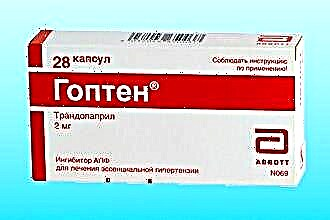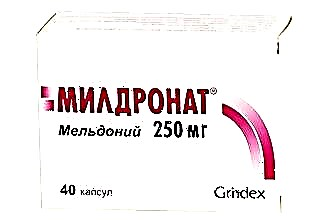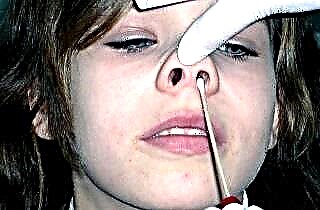An operation is prescribed to remove polyps in the nose only in cases where the neoplasms pose a threat to the patient's health and life. In the early stages, the disease may not make itself felt at all, the tumors are soft to the touch, do not cause discomfort and do not cause pain. However, as they progress, they begin to cause a deterioration in well-being. In such cases, you need to consult a doctor who will decide which method will be best suited to fix the problem.
Indications for surgery
 Before trusting the surgeon, you need to find out whether it is necessary to remove neoplasms from the nose at all. If the tumors are small in size, only a few millimeters, do not obstruct breathing and do not cause other unpleasant sensations, the use of drug therapy is quite acceptable. It is performed using hormonal drugs that reduce the size of polyps and relieve swelling. Cromoglycates will also be effective - agents that control the work of mast cell membranes and stop the production of histamine.
Before trusting the surgeon, you need to find out whether it is necessary to remove neoplasms from the nose at all. If the tumors are small in size, only a few millimeters, do not obstruct breathing and do not cause other unpleasant sensations, the use of drug therapy is quite acceptable. It is performed using hormonal drugs that reduce the size of polyps and relieve swelling. Cromoglycates will also be effective - agents that control the work of mast cell membranes and stop the production of histamine.
Immunocorrective drugs are also widely used; they are made on a bacterial basis and contain lipopolysaccharides, which contribute to the production of antibodies in the body.
But if it is necessary not only to correct the patient's condition, but to fight an already developed disease, removal of nasal polyps with the help of an operation is prescribed.
The indications for surgical intervention are the following violations:
- Difficulty breathing through the nose and constant nasal congestion;
- the constant presence of secretions in the form of mucus mixed with blood;
- headache;
- inflammation that spreads to neighboring organs of the respiratory system;
- loss of taste;
- loss of smell;
- deformation of the voice (nasal);
- change in facial contours, malocclusion (in children);
- snoring during sleep;
- bronchial asthma.
Operation selection specifics
 You can find out how to remove polyps in the nose from your doctor. Before choosing the most suitable method, the doctor examines in detail all the features of the patient's body and the specifics of his disease. For this, an examination is carried out with the help of special instruments, all complaints of the patient are listened to.
You can find out how to remove polyps in the nose from your doctor. Before choosing the most suitable method, the doctor examines in detail all the features of the patient's body and the specifics of his disease. For this, an examination is carried out with the help of special instruments, all complaints of the patient are listened to.
To determine the location and number of neoplasms, their shape and size, in some cases, additional instrumental studies are needed. Magnetic resonance imaging and computed tomography, as well as radiography, provide the most accurate information about polyps and the associated disorders that they caused.
The patient must undergo a blood test, general and chemical, may also need additional examinations if he has serious chronic diseases.
Ways of conducting
There are different methods of removing nasal polyps. They are chosen depending on the severity of the disease, its stage, the presence of concomitant disorders and exacerbations, the patient's age and other criteria.
Let's consider in more detail all the methods of operations and their features.
Classic polypotomy
When using this method, the removal of polyps formed in the nose, the surgeon's main tool is a special loop. The doctor inserts it in so that the neoplasm is completely enclosed. With the help of an external mechanism, the lumen of the loop gradually becomes smaller, until the tumor is completely excised. This method has its advantages:
- no need for general anesthesia, the patient is conscious all the time;
- short duration of the operation;
- quick relief of the patient's breathing, the return of smell and taste.

However, the method also has significant drawbacks. The operation will not help to remove polyps in the nose completely, since the loop covers only part of the neoplasm, and its base remains in place. This leads to tissue overgrowth and relapse. Also, the procedure is quite painful, despite the anesthesia, the patient experiences discomfort. A high degree of injury leads to the fact that if the rules of the rehabilitation period are not followed, the wounds may become infected. However, with properly selected drug therapy, remission lasting several years can be achieved.
Endoscopic nasal polypotomy
 Endoscopic removal of nasal polyps is considered less traumatic and more effective than classical surgery. It is carried out by introducing an endoscope equipped with a miniature camera into the nose. The image is displayed on a large monitor, and the doctor sees exactly which tissues need to be affected. This allows you to remove the nasal polyp completely, even if it takes up almost the entire space of the mucous membrane.
Endoscopic removal of nasal polyps is considered less traumatic and more effective than classical surgery. It is carried out by introducing an endoscope equipped with a miniature camera into the nose. The image is displayed on a large monitor, and the doctor sees exactly which tissues need to be affected. This allows you to remove the nasal polyp completely, even if it takes up almost the entire space of the mucous membrane.
The operation is performed under local or general anesthesia. General anesthesia is indicated for children in order to less traumatize their psyche; in other cases, the patient feels normal while being conscious. The impact with special instruments allows you to achieve minimal trauma to the healthy nearby tissues of the patient.
Removal with a shaver
A shaver is a special tool that removes and sucks in all parts of the neoplasm. Due to the precise effect on specific cells, it is possible to completely clear the mucous membrane and get rid of a polyp in the nose.
The device consists of the installation and the shaver itself, which is inserted directly into the nasal cavity. No incisions are required, which greatly reduces patient injury. It is possible to remove polyps in the nose without blood and pain, which is quite convenient. If the patient has symptoms such as loss of taste and smell, they recede immediately after surgery.
To prevent infection during the rehabilitation period, you need to undergo antibiotic treatment. The prognosis of the procedure is very good, the risk of relapse is minimal, and if they happen, then drug therapy has a positive effect and helps to eliminate the problem.
Laser removal of nasal polyps
 Removal of polyps in the nose with a laser is carried out most often, as it is considered the least dangerous and most effective. Exposure to a laser beam helps to completely clear the mucous membrane from neoplasms, but only if they occupy a small area. The device is inserted into the patient's nose, the beam is directed to the tumor. He gradually heats it up to such a state that the cells begin to literally evaporate.
Removal of polyps in the nose with a laser is carried out most often, as it is considered the least dangerous and most effective. Exposure to a laser beam helps to completely clear the mucous membrane from neoplasms, but only if they occupy a small area. The device is inserted into the patient's nose, the beam is directed to the tumor. He gradually heats it up to such a state that the cells begin to literally evaporate.
Removal of polyps in the nose with a laser makes it possible to avoid swelling and inflammation, because the beam seals all the vessels that come across it. However, after the procedure, the patient must still undergo a course of medication to prevent any complications.
It should be borne in mind that if there are many neoplasms, and they fill the entire cavity of the mucous membrane or most of it, then the method will not work.
Rehabilitation and prognosis
Before removing polyps in the nose, you need to choose a method that will help avoid recurrence. A patient can be registered with an otolaryngologist for a long time and get a lot of complications from a procedure that was performed incorrectly. However, not only the skill of the surgeon, but also the behavior of the patient himself during the rehabilitation period is important.
To prevent unpleasant consequences, you need to follow these tips:
 avoid crowds of people, as there may be carriers of infectious diseases among them;
avoid crowds of people, as there may be carriers of infectious diseases among them;- take all medications prescribed by the doctor, strictly on schedule;
- go for preventive examinations to an otolaryngologist on time;
- avoid on the first day food that is difficult to digest;
- do not overcool;
- do not go to the sauna;
- do not go into the nose with your hands;
- avoid heavy physical exertion.
The easiest way is rehabilitation if the removal of polyps in the nose with a laser was carried out - the patient does not feel pain or swelling, he can breathe normally even on the first day of rehabilitation.
It is impossible to give unambiguous predictions after the procedure, since each organism reacts differently to surgical intervention. In some cases, the neoplasms completely recede, sometimes they recur after a few years, but it happens that they appear in a month.
To avoid recurrence of the disease, the patient must treat respiratory tract infections in time and regularly strengthen the immune system.
Contraindications and risks
Before removing polyps in the nose, the doctor must find out if the patient has any contraindications to the procedure. Most of the factors that prevent surgical intervention are found in patients who need general anesthesia. Anesthesia is contraindicated in many cases, which your doctor will tell you about. Common contraindications include the following conditions:
- pregnancy;
- disturbances in the work of the cardiovascular system;
- severe systemic diseases;
- menstruation in women;
- aggravated viral and infectious diseases;
- allergy in the active stage.
In most cases, laser removal of nasal polyps can be performed without risk to health. However, other techniques can be used, but only after the patient's condition is stabilized and the acute symptoms of the disease disappear.
An attentive attitude to the presence of contraindications will help to avoid complications after surgery and quickly go through the rehabilitation period.
Drawing conclusions
You can remove polyps to almost any person and at almost any age. There are different methods of performing operations. The doctor will select the most suitable for you after a detailed study of the problem, checking the indications and contraindications.
Each method of carrying out the operation has its pros and cons, therefore, the doctor focuses on eliminating the neoplasm as much as possible and at the same time causing a minimum of harm to the body.
Despite the fact that surgical or hardware removal gives good results, the disease tends to recur. No one is immune from the reappearance of neoplasms. However, you can prevent them by following all the doctor's recommendations, carrying out prophylaxis and passing examinations with an otolaryngologist on time. A careful attitude to your health will help to preserve it for many years.

 avoid crowds of people, as there may be carriers of infectious diseases among them;
avoid crowds of people, as there may be carriers of infectious diseases among them;

